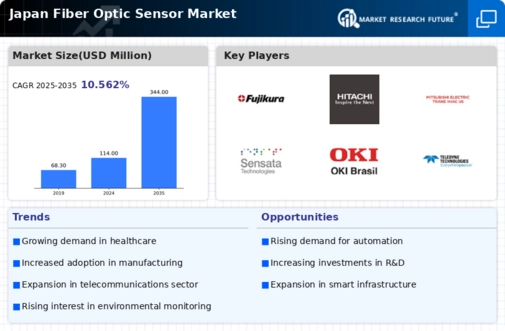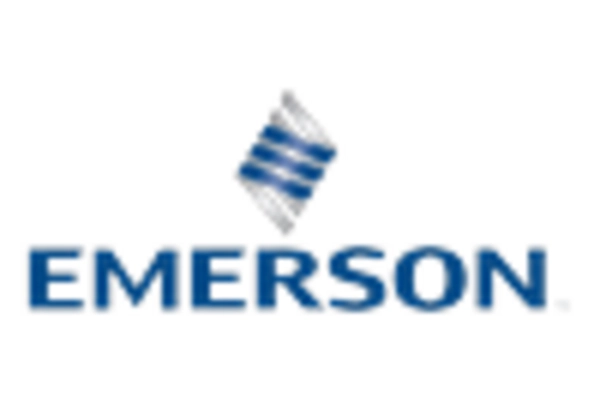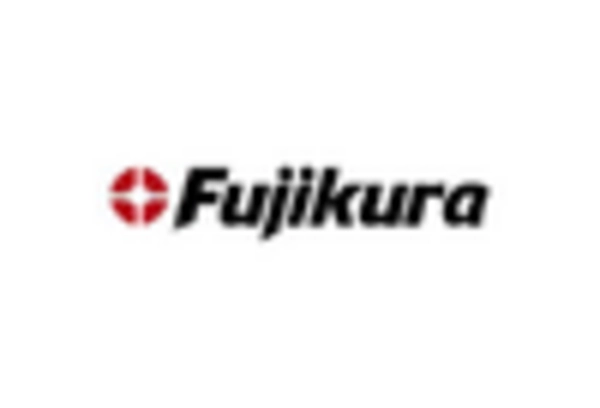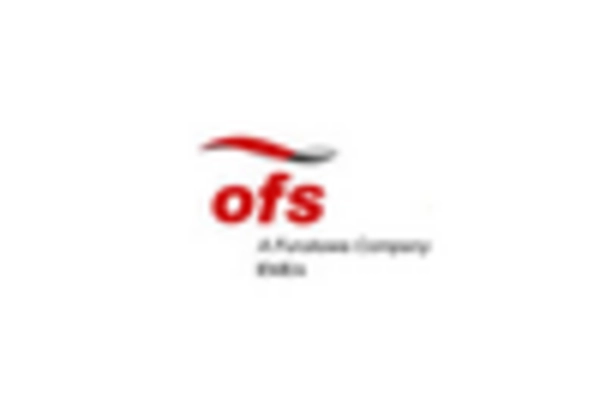The fiber optic-sensor market in Japan is characterized by a dynamic competitive landscape, driven by technological advancements and increasing demand across various sectors, including telecommunications, healthcare, and industrial applications. Key players such as OFS Fitel (US), Corning (US), and Fujikura (JP) are at the forefront, each adopting distinct strategies to enhance their market presence. OFS Fitel (US) focuses on innovation in product development, particularly in sensing technologies that cater to the growing need for real-time data monitoring. Corning (US) emphasizes strategic partnerships and collaborations to expand its product offerings and enhance its technological capabilities. Fujikura (JP), on the other hand, is leveraging its strong local manufacturing capabilities to optimize supply chains and reduce costs, thereby positioning itself competitively within the market. Collectively, these strategies contribute to a robust competitive environment, fostering innovation and efficiency.
In terms of business tactics, companies are increasingly localizing manufacturing to better serve the Japanese market, which appears to be a response to the rising demand for customized solutions. Supply chain optimization is also a critical focus, as firms seek to enhance operational efficiency and reduce lead times. The market structure is moderately fragmented, with several key players exerting influence, yet the presence of numerous smaller firms adds to the competitive dynamics, creating a landscape where innovation and responsiveness are paramount.
In October 2025, Fujikura (JP) announced the launch of a new line of advanced fiber optic sensors designed for industrial applications, which is expected to enhance operational efficiency in manufacturing processes. This strategic move underscores Fujikura's commitment to innovation and its ability to respond to the evolving needs of the market. By introducing these cutting-edge sensors, the company aims to solidify its position as a leader in the sector, catering to the increasing demand for high-performance sensing solutions.
In September 2025, Corning (US) entered into a strategic partnership with a leading telecommunications provider to develop next-generation fiber optic sensing technologies. This collaboration is anticipated to accelerate the deployment of smart infrastructure solutions, reflecting Corning's focus on leveraging partnerships to drive technological advancements. The partnership not only enhances Corning's product portfolio but also positions it favorably within the rapidly evolving telecommunications landscape.
In August 2025, OFS Fitel (US) expanded its manufacturing capabilities in Japan by investing in a new facility dedicated to fiber optic sensor production. This expansion is indicative of OFS Fitel's strategy to localize production and meet the growing demand for fiber optic sensors in the region. By increasing its manufacturing footprint, the company aims to enhance supply chain reliability and reduce lead times, thereby improving its competitive edge in the market.
As of November 2025, current trends in the fiber optic-sensor market are heavily influenced by digitalization, sustainability, and the integration of artificial intelligence (AI) into sensing technologies. Strategic alliances are becoming increasingly important, as companies recognize the value of collaboration in driving innovation and enhancing product offerings. Looking ahead, competitive differentiation is likely to evolve, with a shift from price-based competition towards a focus on technological innovation, reliability, and supply chain efficiency. This transition suggests that companies that prioritize R&D and strategic partnerships will be better positioned to thrive in the future.
















Leave a Comment